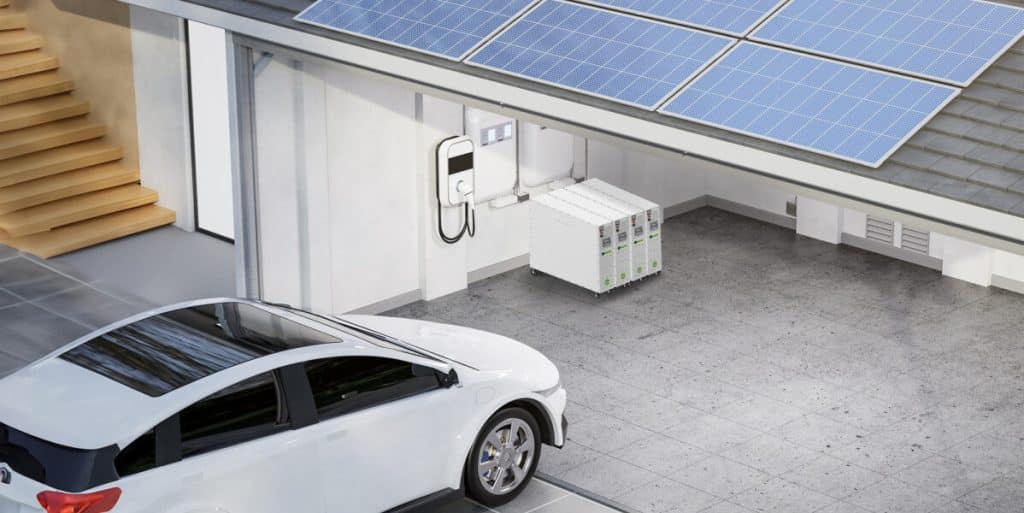The global sodium ion battery market was valued at USD 270.1 Million in 2024 and is set to grow at a CAGR of 26.1% from 2025 to 2034, creating significant opportunities for new entrants like Estonia-based Freen OÜ, which has launched its latest generation of sodium-ion battery storage systems targeting European markets with a strategic focus on Germany.
The BSH and BSL product lines represent Freen’s entry into a rapidly expanding sector driven by supply chain diversification concerns and cost optimization requirements. Unlike lithium-ion alternatives, these systems avoid critical material dependencies while offering competitive pricing structures that challenge conventional assumptions about energy storage economics.
Technical Architecture and Market Positioning
Freen’s high-voltage BSH model delivers 10.08 kWh per module at 575V nominal operation, with scalability up to 100.8 kWh through parallel connections of up to 10 modules. The system operates within 385V to 760V ranges with 8.75A maximum discharge current, while maintaining dimensional constraints of 95.2 cm × 10.8 cm × 74.5 cm at 123 kg per module. The low-voltage BSL variant provides 7.5 kWh capacity at 48V nominal operation, scaling to 45 kWh through six-module configurations with 100A maximum discharge capability.
Both systems target 5,000+ cycle lifespans at 80% depth of discharge, operating in temperatures from -10°C to 35°C with discharge ranges extending from -40°C to 60°C. IP65 protection ratings and cabinet-ready delivery with integrated installation casters address commercial deployment requirements.
The €330/kWh starting price for sodium-ion systems represents a 43% premium over Freen’s €230/kWh lithium-ion offerings, reflecting current market dynamics where sodium-ion technology commands higher initial costs despite long-term economic advantages. This pricing structure challenges assumptions about alternative chemistry competitiveness while highlighting supply chain risk premiums embedded in lithium-dependent systems.
Regulatory Advantage and Supply Chain Implications
Standalone Li-ion batteries cannot be transported as cargo on passenger flights, while sodium-ion systems face fewer international transport restrictions. Sodium-ion batteries, newly regulated in 2025, require UN38.3 testing and specific packaging guidelines, yet avoid the complex hazardous materials classifications that constrain lithium-ion deployment logistics.
This regulatory positioning provides operational advantages for manufacturers and installers, particularly in European markets where logistics costs significantly impact project economics. Freen’s Estonian production base enables direct shipping throughout Europe without the transport complexity associated with lithium-ion systems, potentially offsetting initial price premiums through reduced logistics overhead.
The absence of cobalt requirements eliminates exposure to supply chain volatility in critical mineral markets, where price fluctuations and ethical sourcing concerns have created procurement challenges for lithium-ion manufacturers. This material independence becomes increasingly relevant as stationary energy storage holds 72% of 2024 revenue in the sodium-ion sector, aligning with Freen’s target applications in residential, agricultural, and commercial installations.
Market Dynamics and Competitive Analysis
The market stands at USD 465.21 million in 2025 and is forecast to reach USD 1,003.92 million by 2030, advancing at a 16.63% CAGR, indicating robust demand for alternative battery chemistries. However, market size projections vary significantly across research sources, with estimates ranging from USD 368.71 Million in 2024, expected to Hit USD 974.11 Million at a CAGR of 11.31% during 2025-2033 to more optimistic forecasts suggesting USD 321.75 million in 2023 and is projected to reach USD 74.74 billion by 2030, growing at a CAGR of 20.0% from 2025 to 2030.
This wide variance in market projections reflects uncertainty about adoption rates and competitive dynamics in the sodium-ion sector. Established players face technology maturation challenges, while new entrants like Freen must navigate market education requirements and performance validation processes with potential customers skeptical of alternatives to proven lithium-ion systems.
The German market focus represents a calculated entry strategy, leveraging strong renewable energy adoption rates and sophisticated energy storage demand patterns. Germany’s regulatory environment supports distributed energy storage deployment while maintaining technical standards that favor proven technology suppliers over speculative alternatives.
Technical Performance and Application Constraints
The 5,000+ cycle specification at 80% depth of discharge positions Freen’s systems competitively against lithium-ion alternatives, though long-term performance validation remains limited for sodium-ion technology in field deployments. The temperature operating range from -10°C to 35°C covers most European climate conditions, while the extended discharge range to -40°C addresses cold-weather performance concerns that have challenged some battery chemistries.
Maximum discharge currents of 8.75A for BSH modules and 100A for BSL systems indicate different optimization approaches for high-voltage versus low-voltage applications. The BSL configuration’s higher current capability suggests suitability for applications requiring rapid discharge rates, while BSH systems prioritize efficiency in grid-tied installations where sustained power delivery matters more than peak performance.
Scalability through parallel connections enables capacity matching across diverse application requirements, from residential installations requiring 10-20 kWh to commercial systems demanding 50-100 kWh capacity. This modular approach reduces inventory complexity while enabling standardized manufacturing processes that support cost optimization objectives.
Manufacturing and Distribution Strategy
Freen’s Estonian manufacturing base provides European Union market access without import duties while maintaining relatively low labor costs compared to Western European production. The company’s partnership development approach for German market entry suggests recognition that technical performance alone cannot ensure market penetration without established distribution channels and local support capabilities.
The cabinet-ready delivery model with integrated installation hardware addresses deployment friction points that have slowed adoption of alternative battery technologies. Professional installers often prefer plug-and-play solutions over custom integration requirements, particularly when working with unfamiliar technology platforms where field modifications could void warranty coverage.
Direct factory shipping eliminates distributor margins that typically add 15-30% to system costs, potentially offsetting some of the sodium-ion price premium through streamlined distribution economics. This approach requires significant working capital investment for inventory management and customer financing but provides pricing flexibility that third-party distributors cannot match.
The technology represents a calculated entry into growing markets where supply chain diversification concerns and regulatory advantages may overcome initial cost premiums, though success depends on field performance validation and effective market education programs that distinguish sodium-ion capabilities from established lithium-ion alternatives.





